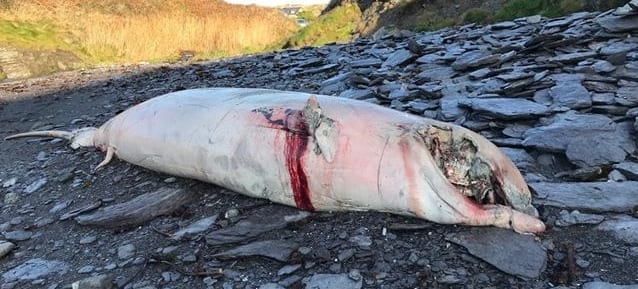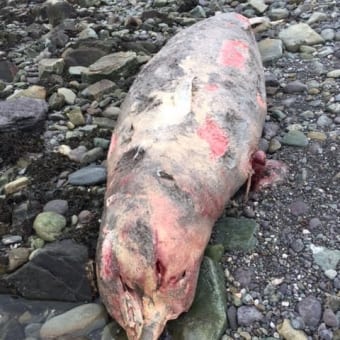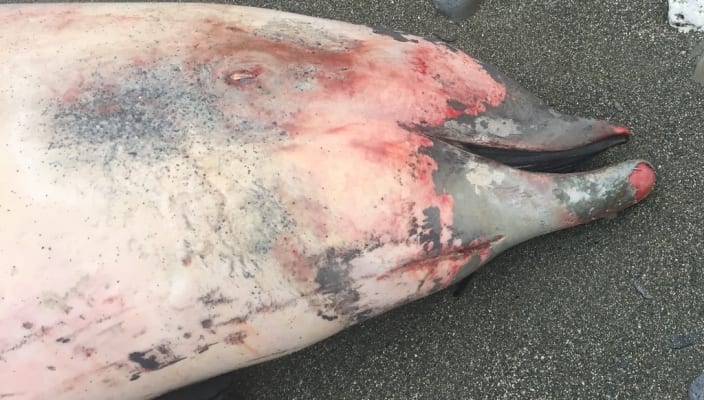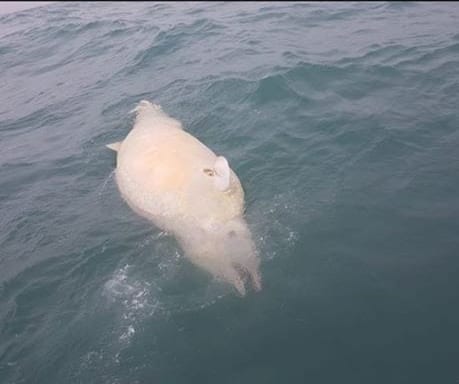What is happening to Cuvier’s beaked whales?
By now, hopefully, many people are aware that the annual number of stranded whales, dolphins and porpoises (cetaceans) in Ireland has virtually doubled in the last ten years and that much of this increase has been due to a huge rise in the numbers of dead common dolphins washing up on our beaches, especially in late winter/early spring. But, almost hidden in the higher numbers of dead dolphins, just what is happening to the relatively unknown beaked whales living in Ireland’s deep offshore waters?
Up until 2013, beaked whale strandings in Ireland were occasional, but infrequent enough that species identification was always a challenge. Cuvier’s beaked whales tended to be stranded more often than other species of beaked whale, but were usually only recorded a couple of times a year. There are 103 records for Cuvier’s beaked whales on the IWDG Cetacean Strandings Database, dating back over a century with most records over the last 20 years or so due to a more directed stranding scheme, with one to three records expected in an average year.
In 2014 numbers increased to six and again in 2015 to seven – low total numbers but still statistically high (i.e. double what was expected) for this species. Of note here is that of these 13 strandings, nine occurred in December 2014 and January 2015 and were likely related to one event offshore. In 2018, a shocking 24 Cuvier’s beaked whales washed ashore in Ireland of which 19 were in August and four in September – again all 23 of these were likely related to one offshore event and are tied in with unprecedented large numbers of beaked whales washing ashore in Scotland and elsewhere in Northern Europe.
In December 2019, IWDG has received (so far) four recorded strandings of Cuvier’s beaked whales – Tragumna, Co. Cork (16 Dec), Castlepoint, Roaringwater Bay, Co. Cork (17 Dec), Lislevane, Clonakilty, Co. Cork (21 Dec) and offshore at Galley Head, Co. Cork (27 Dec).

Tragumna, Cork, 16 Dec 2019, Betty Didderiens

Castlepoint, Schull, Cork, 17 Dec 2019, Keith Payne

Clonakilty Bay, Cork, 21 Dec 2019, Grace Keane O’Connor

Offshore, Galley Head, Cork, 27 Dec 2019, Patrick Lombard
Four dead Cuvier’s beaked whales in 12 days within 70km of each other (and, as always, excluding other dead whales which haven’t washed ashore or been recorded) gives little doubt as to the fact that for the third time in five years we are looking at an unusual mass stranding of Cuvier’s beaked whales on the Irish coast, likely caused by a single event at sea (close proximity of carcasses and at similar stages of decomposition suggesting that they likely died in a similar area and at around the same time.
So, with the current deplorable state of the earth and it’s environment/biodiversity, do we know for certain why these enigmatic whales have died? The short answer is no. Without specialised post mortem of very freshly dead animals (and remember, Cuvier’s live at the deep water continental shelf so are rarely going to wash ashore in fresh condition), we can’t even establish cause of death.
What we are looking at, though, is evidence. What causes the deaths of numbers of animals at the same time and location? Probably not plastic ingestion, this would tend to be more spread out. Disease? – possible, but again why over a short period of perhaps hours/days in different animals in one location? It is well established by now that beaked whales are susceptible to loud man-made noise leading to ear damage and ‘the bends’ from sudden changes in behaviour brought about by said noise. There well documented cases from around the world (Greece, The Canaries, The Bahamas) of beaked whale strandings following naval exercises involving the use of certain frequencies of active sonar. As is so often the case, we are left frustratingly short of answers but the causes of these re-occurring mass strandings of whales we know so little about need to be thoroughly investigated before it is too late.
Mick O’Connell
IWDG Strandings Officer
